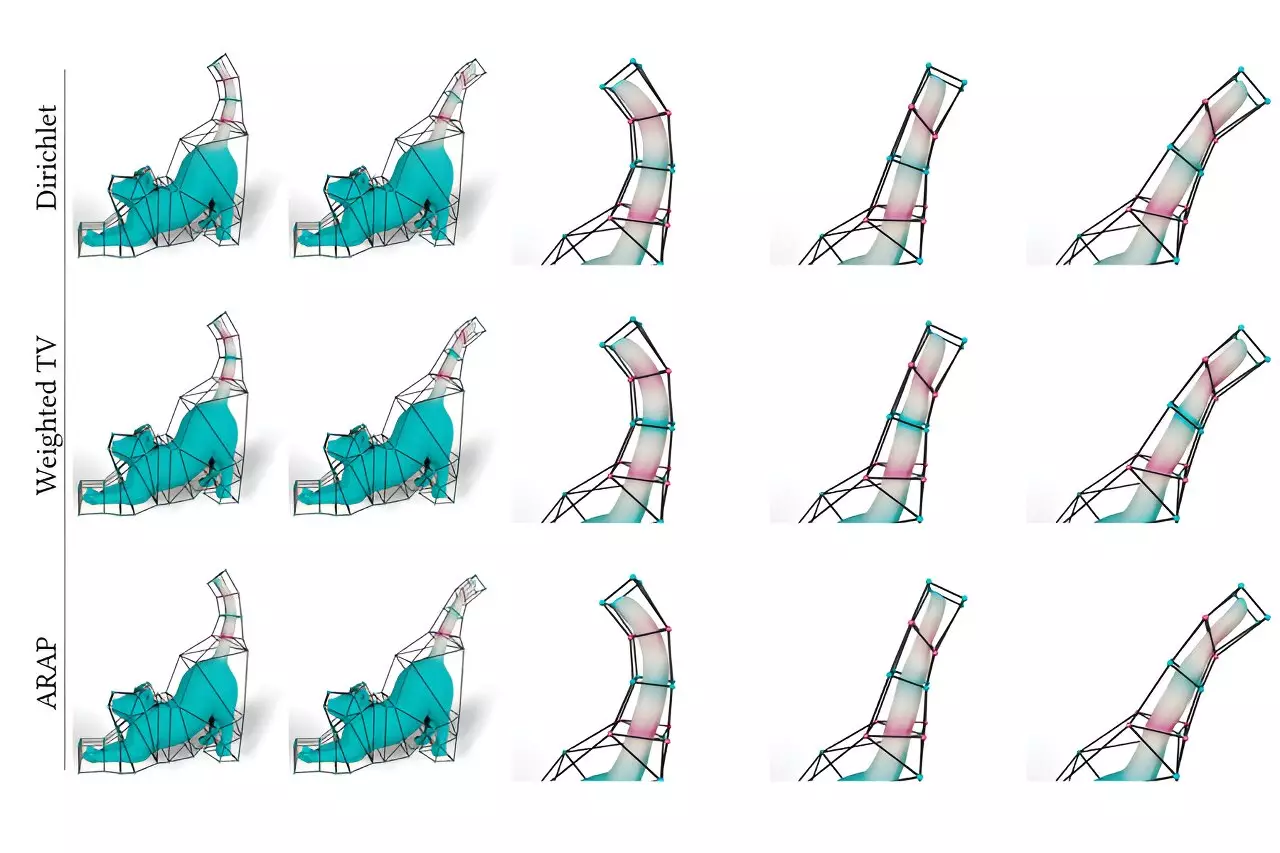Artists have always strived to bring their creative visions to life through animated movies and video games. However, they often face limitations when it comes to controlling the movements of their characters. MIT researchers have developed a groundbreaking technique that empowers artists with more control over their animations by generating mathematical functions known as barycentric coordinates. This new technique allows artists to define how 2D and 3D shapes can bend, stretch, and move through space, providing them with a new level of flexibility and creativity in their artistic process.
Traditionally, animators have relied on complicated equations to determine the motions of characters when the shape of their “cage” is modified. These equations aim to achieve extreme smoothness in the character’s movements, avoiding any kinks or distortions. However, different notions of “smoothness” can lead to different sets of barycentric coordinate functions. MIT researchers recognized the need for a more flexible approach that allows artists to have a say in designing or choosing among smoothness energies for any shape, giving them the ability to preview the deformation and select the smoothness energy that aligns with their vision.
The concept of barycentric coordinates dates back to 1827 when German mathematician August Möbius introduced them. Barycentric coordinates define how each corner of a shape influences its interior. While Mobiüs’ calculations focused on triangles, the MIT research team sought to extend this concept to more complex shapes. They used a special type of neural network to model the unknown barycentric coordinate functions. Neural networks, known for their ability to process inputs through interconnected nodes, were applied in a novel way for mathematical purposes. The team’s network architecture incorporates all necessary constraints into the network, ensuring that the generated solutions are always valid.
Creating barycentric coordinates for intricate cages presents unique challenges. To address this, the researchers came up with a method that covers a shape with overlapping virtual triangles connecting points on the outside of the cage. Each virtual triangle represents a valid barycentric coordinate function. The neural network predicts how to combine these virtual triangles’ barycentric coordinates to create a more complex but smooth function. This approach allows artists to experiment with different functions, observing the final animation and tweaking the coordinates until they achieve the desired look.
The introduction of neural networks in the design process offers artists an unprecedented level of flexibility. By using this method, they can explore various barycentric coordinate functions, making adjustments in real-time. This newfound flexibility allows artists to create more natural-looking animations, where movements flow smoothly and seamlessly, enhancing the overall artistic experience for the audience.
The implications of this technique extend far beyond the realm of animation. The ability to manipulate barycentric coordinates has potential applications in fields such as medical imaging, architecture, virtual reality, and computer vision for robotics. It can aid in understanding how objects move in the real world, advancing various industries and contributing to technological advancements.
Looking ahead, the research team aims to accelerate the neural network, exploring different strategies to optimize its performance. They also plan to develop an interactive interface that will enable artists to iterate on animations in real-time, providing a seamless and intuitive creative process. The combination of mathematical precision and artistic vision opens up a world of possibilities for the future of animation.
MIT researchers have revolutionized the animation industry by introducing a technique that empowers artists with greater control over their animations. By generating flexible barycentric coordinate functions through neural networks, they have unlocked a new level of creativity and artistic expression. This method has the potential to shape the future of animation, allowing artists to create captivating and emotionally engaging experiences for audiences across various mediums. As technology continues to advance, the possibilities for artistic expression in animation are limitless.


Leave a Reply